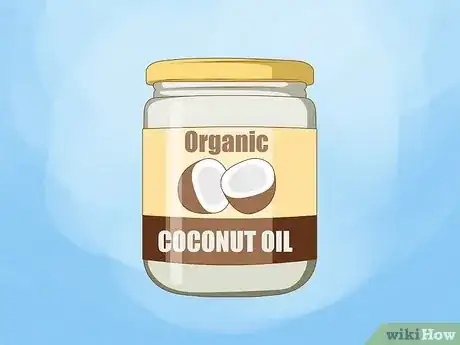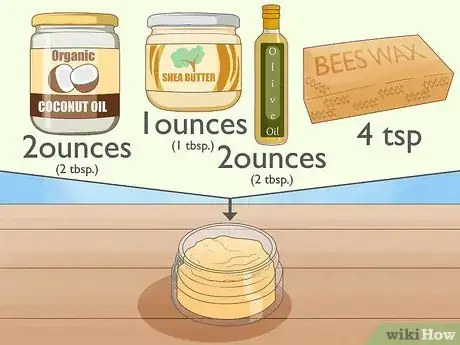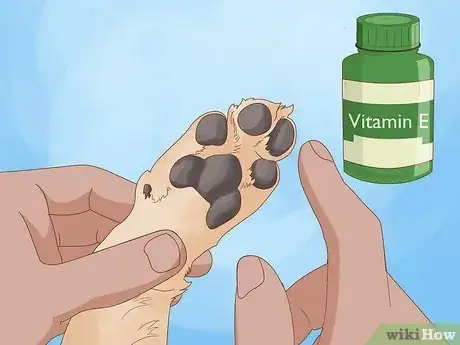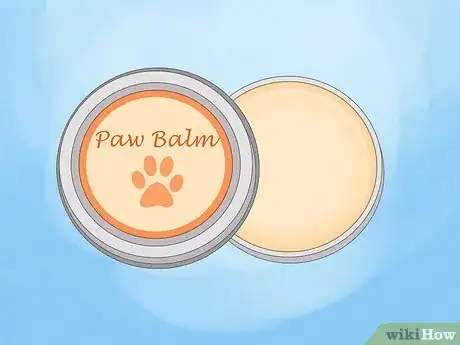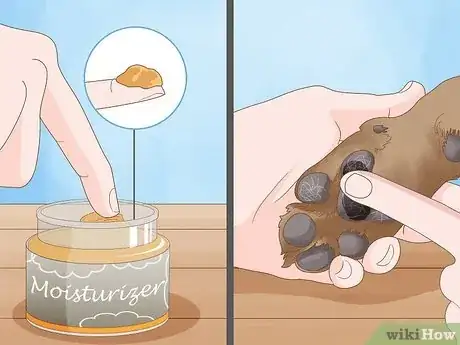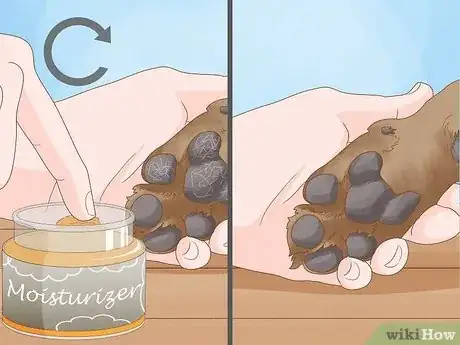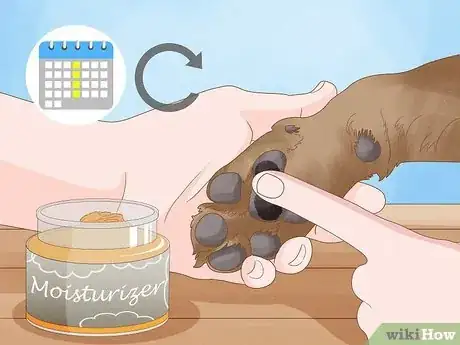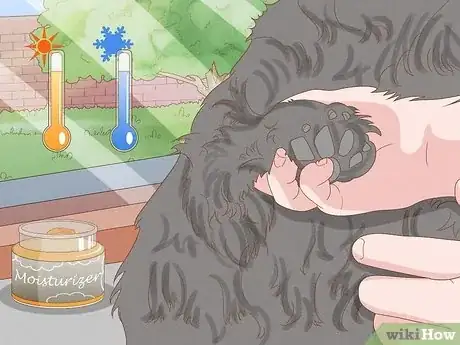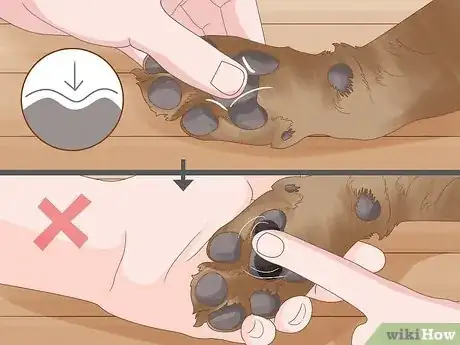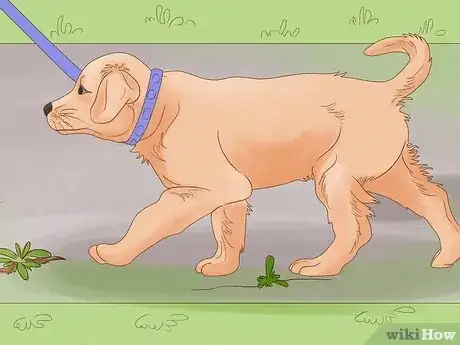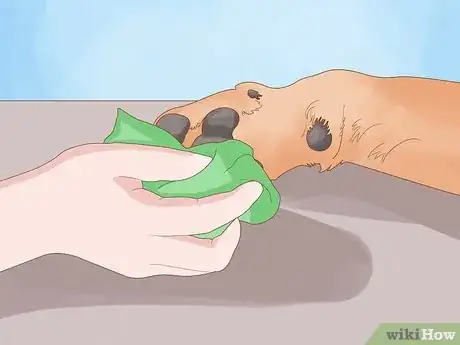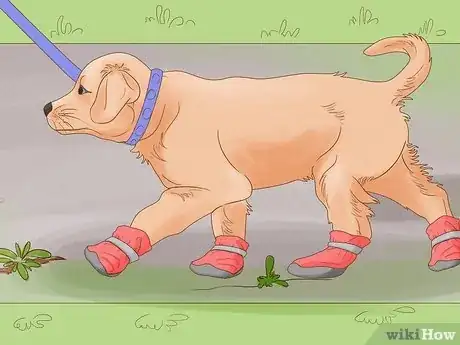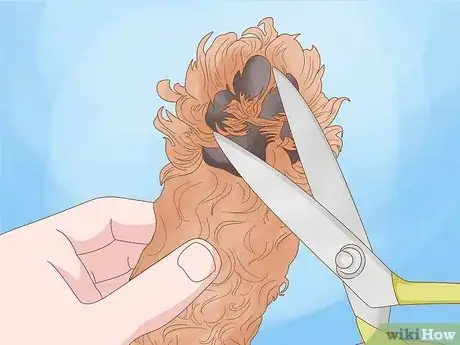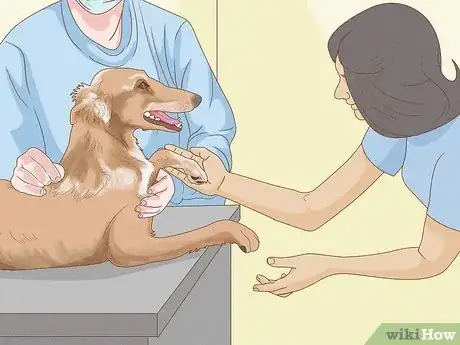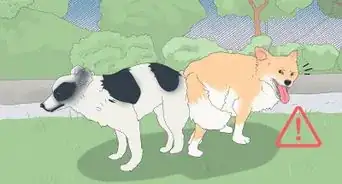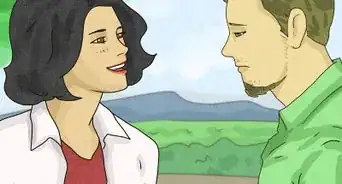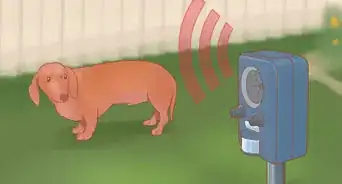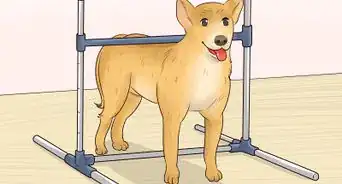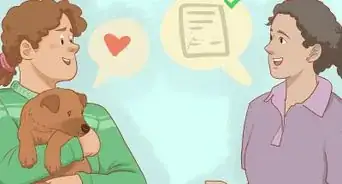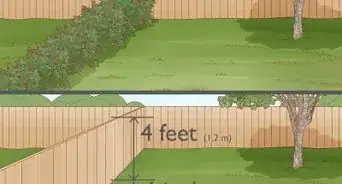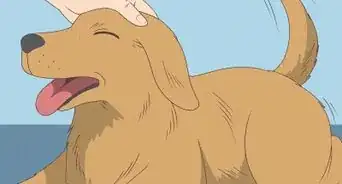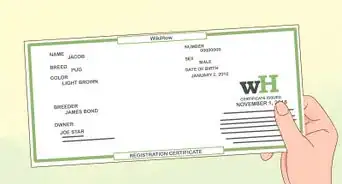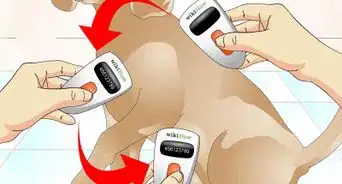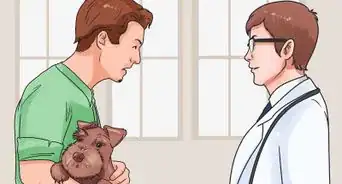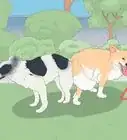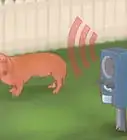This article was co-authored by Beverly Ulbrich and by wikiHow staff writer, Eric McClure. Beverly Ulbrich is a Dog Behaviorist and Trainer and the Founder of The Pooch Coach, a private dog training business based in the San Francisco Bay Area. She is a Certified CGC (Canine Good Citizen) Evaluator by the American Kennel Club and has served on the Board of Directors for the American Humane Association and Rocket Dog Rescue. She has been voted the best private dog trainer in the San Francisco Bay Area 4 times by SF Chronicle and by Bay Woof, and she has won 4 "Top Dog Blog" awards. She has also been featured on TV as a dog behavior expert. Beverly has over 18 years of dog behavior training experience and specializes in dog aggression and anxiety training. She has a Master of Business Administration from Santa Clara University and a BS from Rutgers University.
There are 7 references cited in this article, which can be found at the bottom of the page.
This article has been viewed 10,830 times.
Are you trying to get ahead of the rough weather to keep your dog’s paws safe? Wondering how you can treat dry or cracked paw pads? There are a variety of easy ways to keep your furry friend’s paws safe and moisturized. In this article, we’ll help you pick the right moisturizer for your needs and explain how to apply it. We’ve also got the best tips to help you keep your pup’s paws healthy all year long.
Steps
Choosing a Moisturizer
-
1Opt for coconut oil if you need a quick, organic solution. If you need a solution right now, go grab some coconut oil. It’s natural, it’s digestible if your pup starts licking their paws, and it can soothe irritation from a damaged paw. If you’re in a pinch and want to relieve dry paw pads, this is an easy way to go.[1]
-
2Make paw balm at home for a natural, inexpensive option. In a small pot, melt 2 ounces (2 tbsp.) of olive oil, 2 ounces (2 tbsp.) of coconut oil, 1 ounce (1 tbsp.) of shea butter, and 4 tsp. of beeswax. Stir thoroughly until it has a uniform texture and let them cool off a bit. Pour the mixture into tins or tubes and let it cool. Voila! Organic DIY paw balm.[2]
- You can use sunflower or sweet almond oil instead of olive oil if you prefer.
- Store the balm at room temperature. It should be good for 1-2 years.
Advertisement -
3Use vitamin E cream for dried-out pads that need to heal. When it comes to repairing blistered, cracked, or dried-out paw pad skin, vitamin E cream is a great choice. Pick up a vitamin E cream designed specifically for dogs and apply it whenever you want your dog’s paws to heal while moisturizing.[3]
- You still want to use a vitamin E cream designed specifically for dogs. Any cream meant for people will be too strong for a dog’s sensitive paws.
-
4Get a paw balm designed for dogs for ideal moisturization. Paw balm is a protective and restorative solution formulated for canines. Think of it kind of like human moisturizer, but for dogs. You can pick one of these balms up at any pet store or order online.[4]
- You can use paw wax if you prefer. Paw wax and balm don’t tend to be dramatically different from one another.
- Don’t use moisturizer or lotion designed for people. It tends to make a dog’s pow pads too soft, which can make them prone to injury.
Applying the Moisturizer
-
1Work the balm or oil directly into each of your dog’s paws. To apply the moisturizer, simply work a chunk of the oil or balm directly into the paw pads. Work the moisturizer in between your dog’s individual pads and toes. Continue massaging the oil or balm until there’s nothing left on the surface of the pads and skin. Repeat this process for each of your dog’s paws.[5]
- If your dog goes immediately to lick the oil or balm off of their paws, distract your pup with treats or playtime for a few minutes.
-
2Continue moisturizing daily until cracked paw pads are restored. Dried-out paw pads may look chalky, or feel dusty. There may even be physical cracks or blemishes. Whenever you notice dry paw pads, grab your oil or balm and work it into your pup’s paws. Do this every day until their paw pads are restored and they feel firm, but semi-smooth and uniform in color.[6]
- It is possible to over-moisturize, but you don’t need to worry about that until the signs of dry paws are totally gone.
- You can also tell if your dog’s paws are too dry if they lick them frequently.
-
3Reapply the balm or oil roughly every week or so. Your pup’s pads should be firm and callous enough to handle rough terrain, but soft enough that they aren’t cracking or drying out entirely. Some dogs can go months without their paws needing to be moisturized. For a pup whose pads tend to dry out, you likely want to apply moisturizer once every week or so.[7]
- Different breeds and energy levels require different levels of attention. A laid-back bulldog who takes calm strolls will likely need less moisturizing than a hyper border collie who runs miles a day.
-
4Moisturize preventatively when it’s especially hot or cold outside. Cold ground, snow, and salt can dry your pup’s pads out and cause cracks. In the heat, hot pavement can scuff and irritate your dog’s paws. Before you go on your walks, work some of your paw balm or oil into each of your dog’s feet. This will keep them from getting worn out or damaged on your walks.[8]
- Brush your pup’s paws off with a clean cloth if you go out in the snow or rain. The moisturizer may cause debris or dirt to stick to your dog’s paw pads.
-
5Stop moisturizing entirely if your pup’s paws are too soft. A dog’s paws are designed to be tough enough for the terrain. If you moisturize so often that your pup’s paw pads are super soft and malleable, they’ll be more likely to cut their paw pads on your walks. Many dogs (if not most) do not require daily moisturizing in normal circumstances.[9]
Protecting Your Dog’s Paws
-
1Take your dog on walks that include a mix of pavement and grass. These two surfaces will keep your dog’s paws healthy. Concrete or pavement will help toughen your dog’s paw pads so they don’t get hurt easily, and it will help file your dog’s nails and keep them an appropriate length. Soft grass or dirt will give your dog’s paws a break (and give them time to use the bathroom and do some sniffing). Don’t overdo it on either surface for best results.[10]
- Stay away from trash piles or loose asphalt. These surfaces can wedge all kinds of contaminants and junk in between your dog’s pads.
- Keep an eye out for shattered glass on your walks—especially if you live in a city. It can be hard to see translucent glass on the ground, but it can seriously hurt your dog’s paws.
-
2Wipe your dog’s paws after walks to keep them clean and healthy. You don’t need to get crazy here—just grab a clean cloth and give your furry friend’s paws a wipe. If they pick up something nasty on their walks, a quick wipe should dislodge it and remove the issue. This is a particularly good idea if your dog has allergies or they go walking in the snow or rain.[11]
- You can use a little bit of water to remove any caked-on dirt or dust if you’d like.
-
3Put booties on your dog’s paws if it’s super cold outside. Dog booties will keep your pup’s paws warm and safe when it’s extremely cold out, which is an especially dangerous time for a dog’s paws. Find some cute booties that fit your dog and throw them on before you trek out in the winter.[12]
- Go slow the first few times you put booties on your dog. A lot of dogs get a little freaked out and confused when you put boots on them for the first time.
-
4Trim your dog’s paw fur periodically to prevent injuries. Your dog’s paw fur shouldn’t stick out past the pads. Check your dog’s paws every couple of weeks to see if the fur has grown too far. If it has, use a small pair of scissors to trim the fur back. This will prevent your dog’s fur from getting matted or knotted on long walks, which will cause irritation or damage to your dog’s paws over time.[13]
- You can take your pup to a groomer if your dog doesn’t sit still for you to do this.
-
5Take your dog to a vet if its paw pads are damaged. If your dog is behaving strangely, limping, bleeding, or constantly licking its paws, take them to the vet. It can be difficult to heal a dog’s paw at home, but it will be exceptionally easy for a medical professional to solve the problem.[14]
- Discoloration or visible damage is another sign that your dog needs some medical attention.
- If you ever need to perform first aid for your pup’s paw, flush it with cold water or use a cold compress to soothe symptoms and carry your dog to the vet.
Expert Q&A
-
QuestionHow do I desensitize my dog to touch her paws?
 Beverly UlbrichBeverly Ulbrich is a Dog Behaviorist and Trainer and the Founder of The Pooch Coach, a private dog training business based in the San Francisco Bay Area. She is a Certified CGC (Canine Good Citizen) Evaluator by the American Kennel Club and has served on the Board of Directors for the American Humane Association and Rocket Dog Rescue. She has been voted the best private dog trainer in the San Francisco Bay Area 4 times by SF Chronicle and by Bay Woof, and she has won 4 "Top Dog Blog" awards. She has also been featured on TV as a dog behavior expert. Beverly has over 18 years of dog behavior training experience and specializes in dog aggression and anxiety training. She has a Master of Business Administration from Santa Clara University and a BS from Rutgers University.
Beverly UlbrichBeverly Ulbrich is a Dog Behaviorist and Trainer and the Founder of The Pooch Coach, a private dog training business based in the San Francisco Bay Area. She is a Certified CGC (Canine Good Citizen) Evaluator by the American Kennel Club and has served on the Board of Directors for the American Humane Association and Rocket Dog Rescue. She has been voted the best private dog trainer in the San Francisco Bay Area 4 times by SF Chronicle and by Bay Woof, and she has won 4 "Top Dog Blog" awards. She has also been featured on TV as a dog behavior expert. Beverly has over 18 years of dog behavior training experience and specializes in dog aggression and anxiety training. She has a Master of Business Administration from Santa Clara University and a BS from Rutgers University.
Dog Behaviorist & Trainer Ultimately, you need to get your dog used to being touched on her paws. In nature, nobody grabs a dog's paws or touches their paw pads, so dogs aren't used to that type of motion. It can help to start touching your dog's paws when she's a young puppy, so she gets used to the feeling.
Ultimately, you need to get your dog used to being touched on her paws. In nature, nobody grabs a dog's paws or touches their paw pads, so dogs aren't used to that type of motion. It can help to start touching your dog's paws when she's a young puppy, so she gets used to the feeling.
References
- ↑ https://www.akc.org/expert-advice/health/is-coconut-oil-good-for-dogs/
- ↑ https://www.akc.org/expert-advice/lifestyle/how-to-make-your-own-paw-balm-for-winter/
- ↑ https://www.akcchf.org/canine-health/your-dogs-health/caring-for-your-dog/keeping-dogs-paws-healthy.html
- ↑ https://www.akc.org/expert-advice/vets-corner/protect-dogs-paws-snow-ice-salt/
- ↑ https://www.akc.org/expert-advice/vets-corner/protect-dogs-paws-snow-ice-salt/
- ↑ https://www.akc.org/expert-advice/vets-corner/protect-dogs-paws-snow-ice-salt/
- ↑ https://www.thedogoutdoors.com/mushers-secret-faq.html
- ↑ https://www.popsci.com/diy/diy-paw-pad-balm/
- ↑ https://www.akcchf.org/canine-health/your-dogs-health/caring-for-your-dog/keeping-dogs-paws-healthy.html
- ↑ https://www.akcchf.org/canine-health/your-dogs-health/caring-for-your-dog/keeping-dogs-paws-healthy.html
- ↑ https://www.akc.org/expert-advice/lifestyle/how-to-make-your-own-paw-balm-for-winter/
- ↑ https://www.akc.org/expert-advice/vets-corner/protect-dogs-paws-snow-ice-salt/
- ↑ https://www.akc.org/expert-advice/lifestyle/how-to-make-your-own-paw-balm-for-winter/
- ↑ https://www.foxla.com/news/vet-issues-summer-walk-warning-after-treating-dog-with-burned-off-paw-pads
